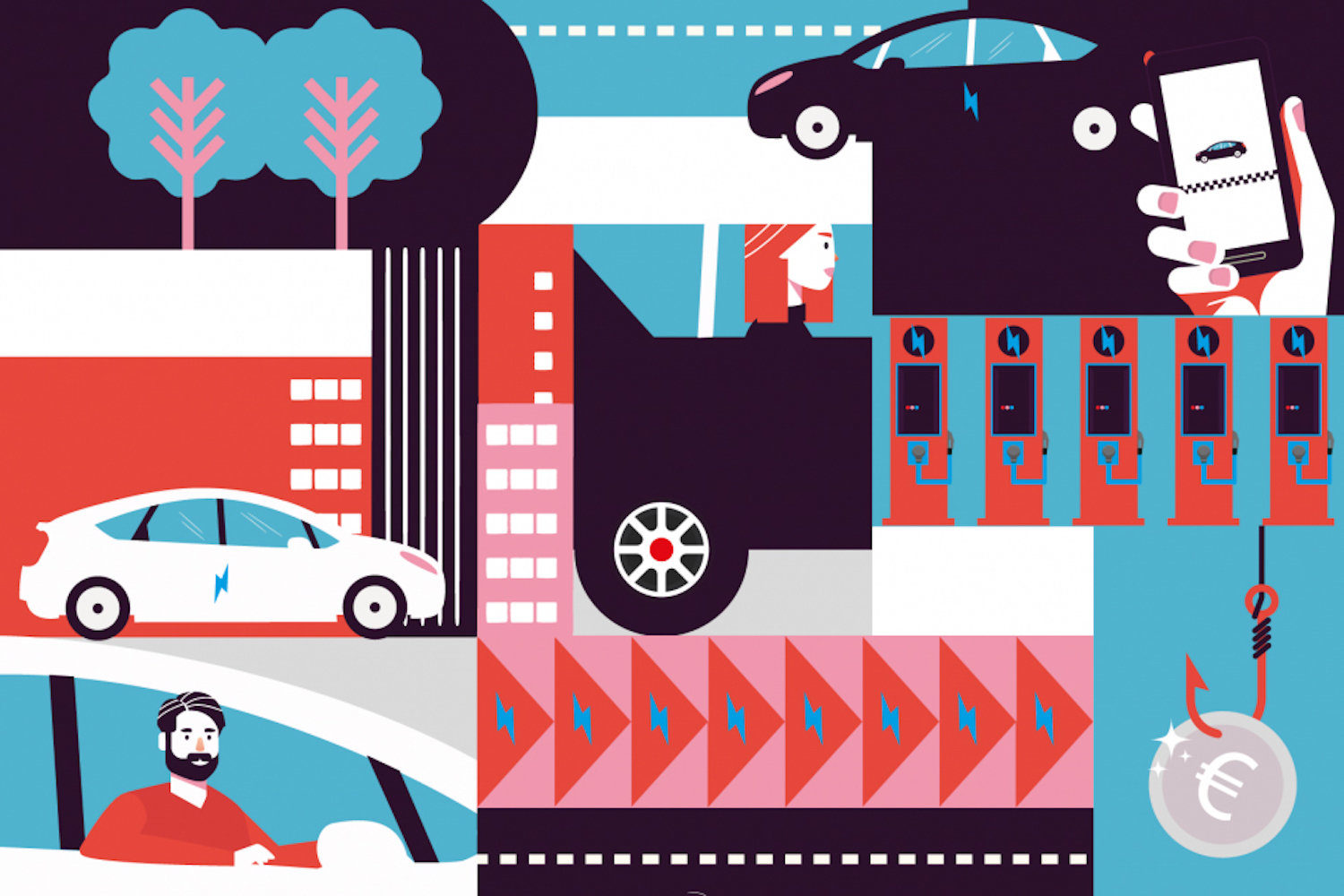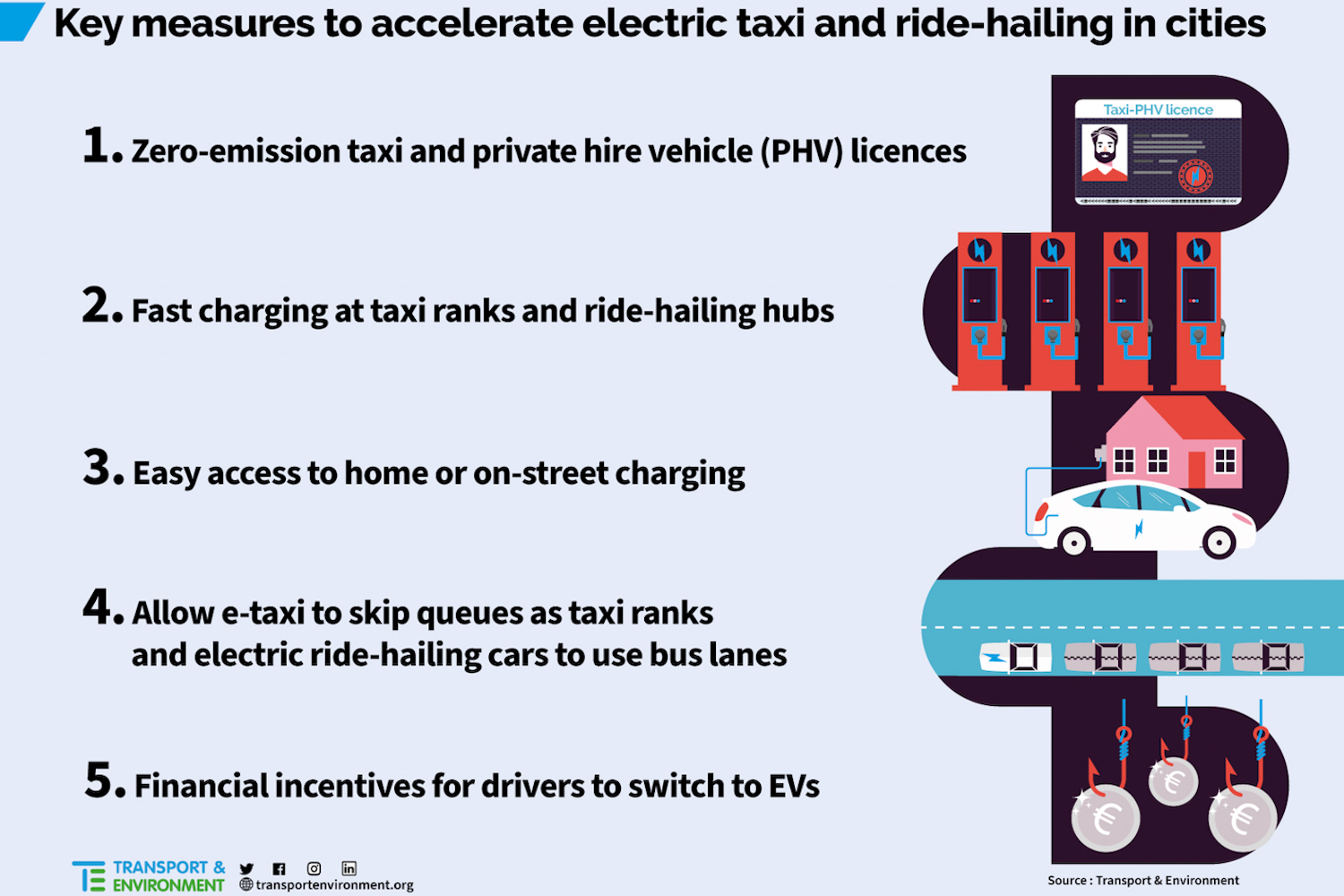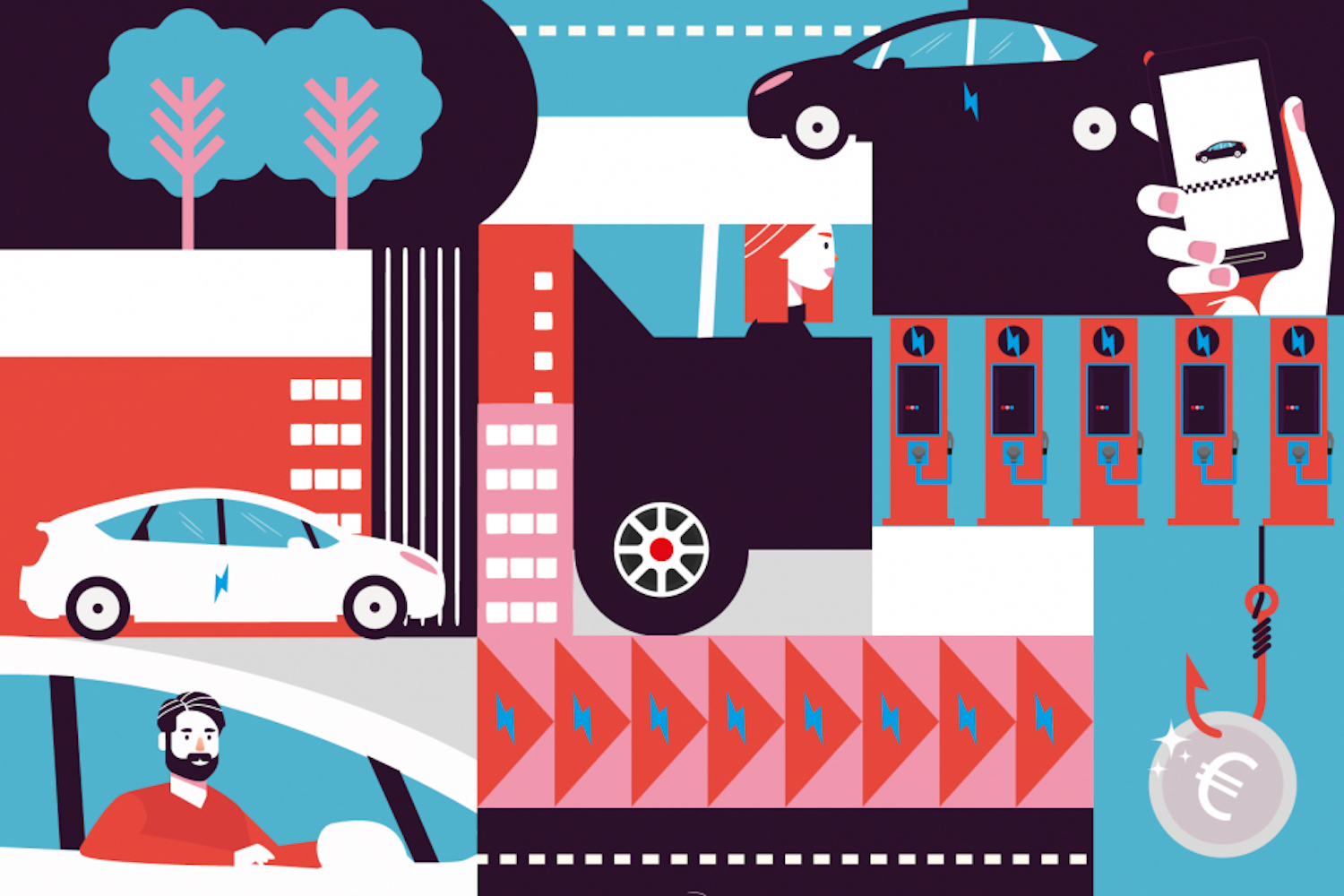Depending upon what city you're working in, if you're a taxi driver or an Uber operator, you should be switching to electric power - not just for environmental reasons, but actually to save money.
Running costs up to 24 per cent lower
That's the advice of environmental think-tank Transport & Environment (T&E) which this week has released a report which says operating costs could be as much as 24 per cent lower for an EV taxi than for an equivalent diesel.
That's assuming you work in Paris - thanks to a combination of cheaper electricity, lower EV retail prices and higher purchase incentives, which means that a Parisian taxi driver could save themselves €3,000 per year by going electric.
According to T&E: "The taxi and ride-hailing markets are best positioned to go fully electric first. The economics of EVs - more expensive to buy but a lot cheaper to run - match perfectly with high-mileage, low-margin businesses like ride-hailing and taxis. Uber-type drivers can do up to five times more kilometres than an average motorist."
T&E's research shows that on average, across five of the major European urban centres, running an EV taxi saves you 14 per cent compared to the costs of running a diesel. That's assuming 60,000km a year, and comparing a Nissan Leaf e+ to a Skoda Octavia TDI diesel. There's a 20 per cent 'opportunity cost' worked into that too, to allow for time spent charging the car during the working shift.
Cleaner air, quieter neighbourhoods
Yoann Le Petit, new mobility expert with T&E, said: "This is a win-win-win situation for drivers, citizens and the planet. The sooner Uber and taxis go 100 per cent electric, the sooner citizens will enjoy cleaner air and quieter neighbourhoods, the planet will have less climate-wrecking emissions and drivers will earn more money. If Uber wants to lead the change and be part of the solution for our cities, then the company should commit to 100 per cent electric rides by 2025 in key European capitals."
Charging is seen as a major barrier, so T&E is calling for more (cheap) slow chargers in residential areas, to allow taxi and Uber drivers to top up at home overnight and more rapid chargers to allow them to top up quickly in between passengers. In London, the Mayor's office expects 70 per cent of the demand for slow and normal chargers in residential areas will come from Uber drivers alone.
Extra hit to emissions from taxis going electric
If taxis and Ubers do go all-electric, then their effect on CO2 emissions (and other, local, pollutants) could be massive. EVs in general cut emissions, compared to a diesel car, by two thirds, but with higher mileages, taxis switching to electric could magnify that effect.
Yoann Le Petit said: "In the fight against climate change and air pollution, city dwellers need to be able to commute less, cycle more and hop on the bus or metro more often. But to realise the goal of cleaner cities, authorities will also need to clean up the car fleet too. It makes perfect economic and climate sense to fully electrify high-mileage vehicles like Ubers and taxis. Cities have a crucial role in the ecological transition, providing the right incentives so drivers switch to EVs, and building up the charging network so they can operate easily."
The number of drivers for apps such as Uber, Bolt and Kapten has mushroomed in recent years. In Paris, the fleet of ride-hailing drivers tripled in the past four years, from around 10,000 in 2016 to about 30,000 today. Paris mayor Anne Hidalgo has committed to requiring the ride-hailing sector to go zero-emission should she be re-elected on 28 June.
In Portugal, the number of drivers also tripled in 2019 to reach almost 20,000 professional drivers. In London, the largest market for ride-hailing services in Europe, there were 88,000 active Uber-type drivers in 2018.



